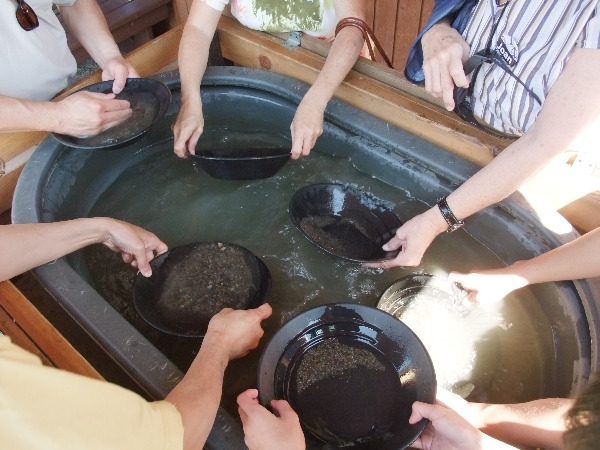
One of the best things about this year’s Chinese Heritage Tour of the American West - at least for me – is the number of interesting participants you can talk with at almost any moment.
Case in point: My afternoon chat with Tony Chinn, a 63-year-old resident of Seattle. In China, his relatives came from the Toisan, or Taishan, region of Guangdong province.
With the heat hovering in the 80s and 90s on Wednesday, some tour participants sought shade at the Sumpter Valley Dredge State Heritage Area in Oregon.

As you can see in the photographs above, some panned for gold – and found flakes. Others toured the Dredge, a gigantic piece of machinery used to shake things loose so gold could be found.

I walked around this heritage area and finally spotted Tony seeking shade under a covered porch. When I first met him, I remarked that I liked his Toisan shirt.
I asked him whether being in this dry temperature, surrounded by trees and in a rocky area with mountains nearby, put anything from Chinese American pioneer history into more context.
As I recall, he was taking swigs from a bottle of water.
As we’re learning along the way by talking with historians and rangers, gold and railroad work served as huge magnets for Chinese immigrants in the mid- to late-1800s, many who arrived after being hired by labor contract companies.
During the 19th century, the Toisan area saw famine, instability and turmoil - sadly, all the right ingredients to push people from one place to another.
As he looked out at the rocks and felt the day’s warmth on his skin, he gave this answer:
You feel the heat. So you can imagine how they had to endure the heat. I think (the trip) answers questions I never thought of asking. Imagine how hard it was for them to get here. You get that sense by being here. I’d imagine it’s pretty cold in the winters.
Like I said before: On a trip such as this, interesting questions and answers are bound to happen.
– Brad Wong
Comments
Leave a comment Trackback